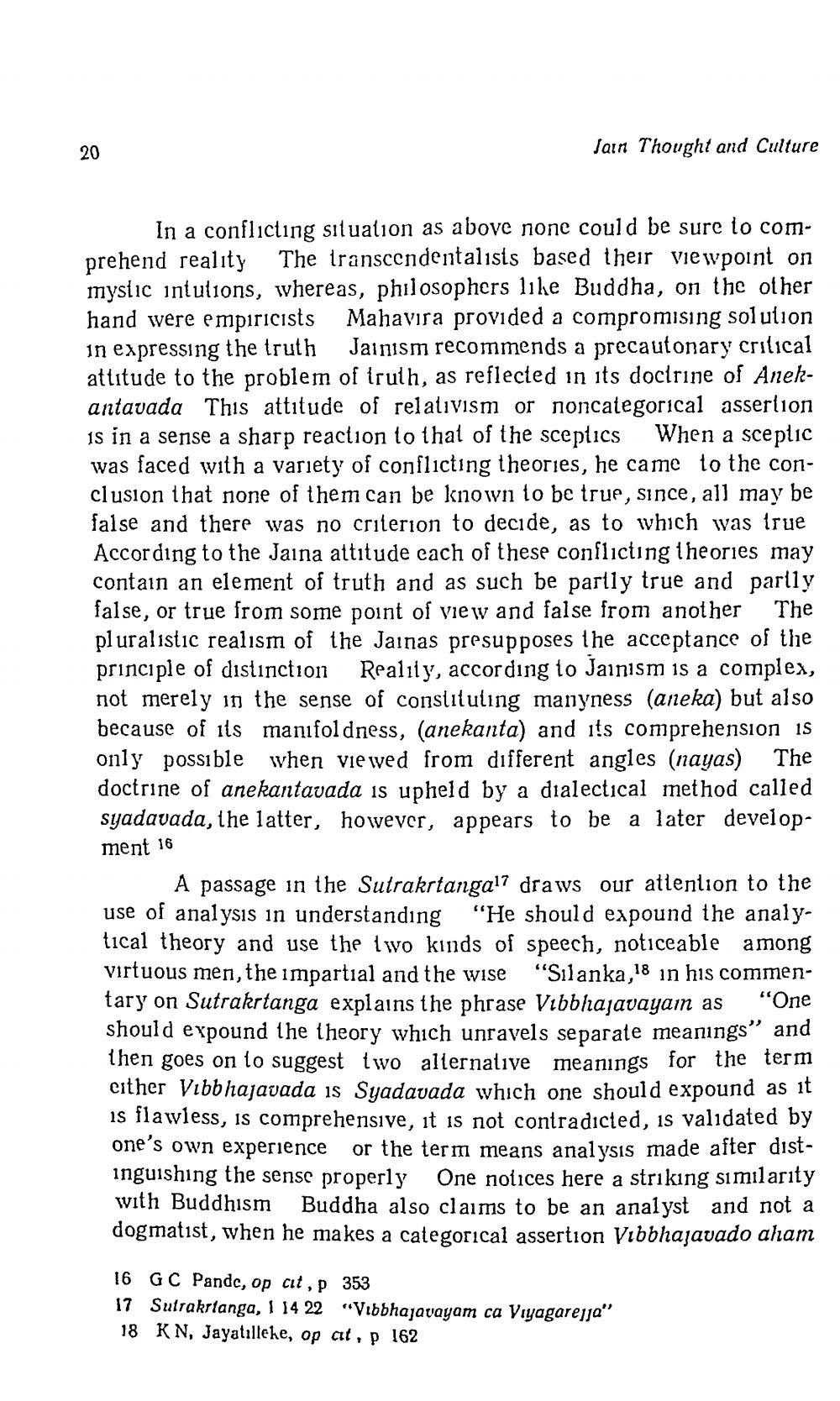________________
Jain Thought and Culture
In a conflicting situation as above none could be sure to comprehend reality The transcendentalists based their viewpoint on mystic intutions, whereas, philosophers like Buddha, on the other hand were empiricists Mahavira provided a compromising solution in expressing the truth Jainism recommends a precautonary critical attitude to the problem of truth, as reflected in its doctrine of Anekantavada This attitude of relativism or noncategorical assertion is in a sense a sharp reaction to that of the sceptics When a sceptic was faced with a variety of conflicting theories, he came to the conclusion that none of them can be known to be true, since, all may be false and there was no criterion to decide, as to which was true According to the Jaina attitude each of these conflicting theories may contain an element of truth and as such be partly true and partly false, or true from some point of view and false from another The pluralistic realism of the Jainas presupposes the acceptance of the principle of distinction Realily, according to Jainism is a complex, not merely in the sense of constituting manyness (aneka) but also because of its manifoldness, (anekanta) and its comprehension is only possible when viewed from different angles (nayas) The doctrine of anekantavada is upheld by a dialectical method called syadavada, the latter, however, appears to be a later development 16
A passage in the Sutrakrtangal7 draws our attention to the use of analysis in understanding “He should expound the analytical theory and use the two kinds of speech, noticeable among virtuous men, the impartial and the wise “Silanka,18 in his commentary on Sutrakrtanga explains the phrase Vibbhajavayam as “One should expound the theory which unravels separate meanings and then goes on to suggest two alternative meanings for the term either Vibb hajavada is Syadavada which one should expound as it is flawless, is comprehensive, it is not contradicted, is validated by one's own experience or the term means analysis made after distinguishing the sense properly One notices here a striking similarity with Buddhism Buddha also claims to be an analyst and not a dogmatist, when he makes a categorical assertion Vibbhajavado aham
16 GC Pande, op cit, p 353 17 Sutrakrtanga, I 14 22 “Vibhajavayam ca Viyagarejja" 18 KN, Jayatillehe, op at, p 162




